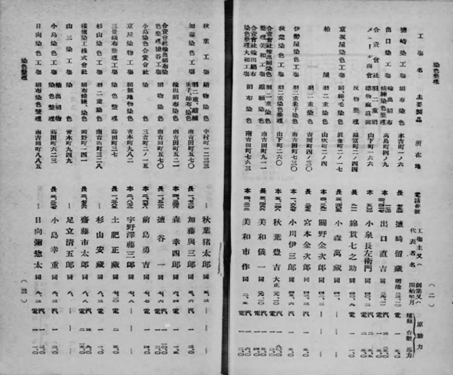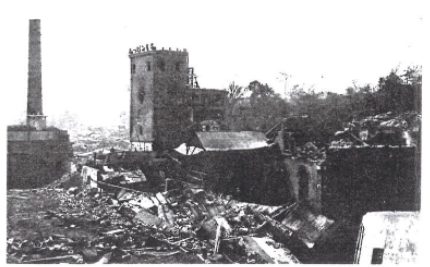Research outcomes of the Program for the Promotion of Next Generation Research Projects
Toshihiro Okubo
Faculty of Economics
Overview of research project
Large-scale natural disasters can have a substantial and persistent impact not only on economies, but also on the activities of companies, households, and the behavior of individuals. Professor Toshihiro Okubo, who specializes in International Economics at the Keio University Faculty of Economics, has been working on a research project on this issue using corporate-level, regional-level, and household-level data, granted by the Program for the Promotion of Next Generation Research Projects at Keio University.
In this research project, Prof. Okubo conducts an econometric analysis to ascertain the impact of large-scale earthquakes on corporate survival and growth in Japan. It seeks to answer questions such as how and what kind of companies can survive, how the surviving firms recovered after the earthquake, and what persistent factors affected the growth of these organizations. In other words, the research project uncovers the resilience of firms in the face of huge negative shocks. This issue is quite important in current-day Japan, which has experienced many natural disasters, including large-scale earthquakes and typhoons, not to mention the current COVID-19 pandemic. One of the major areas of research in this project was on companies in the city of Yokohama that were damaged during the Great Kanto Earthquake of 1923. The results were published in 2019 in the Journal of Economic History as the lead article with the authors listed as Okazaki, Okubo, and Strobl.
The Great Kanto Earthquake occurred on September 1, 1923, and caused major damage in the Yokohama area. More than 90% of the factories in Yokohama were destroyed in the earthquake or burnt down in the subsequent fires. The damage in Yokohama was generally regarded as being much more severe than in neighboring Tokyo; despite this, manufacturing firms in Yokohama recovered quickly. Okubo and his colleagues investigated this so-called "creative destruction," which refers to the upgrading of machine technology and survival of efficient companies. Comparing corporate-level data on capital (namely then horsepower of machine motors) from before and after the earthquake, there is substantial evidence of "creative destruction."
Data from Yokohama City
The novelty of this research is in the rich, unique data. In the research project, several sets of unique data were collected from diverse sources. The corporate-level data were collected from historical statistical volumes, such as the Handbook of Manufacturing Firms in Yokohama City (横濱市工業名鑑, Yokohama City Office; see fig. 1 below). Furthermore, the team collected many original documents, including historical volumes of companies and banks located in Yokohama as well as historical volumes of Yokohama City and local newspaper articles published in the 1920s. The team was fortunate that Yokohama City has preserved many rare historical sources. In particular, corporate-level data include machine engine power information at the corporate level (horsepower) [See fig. 2 below] and there are records from both before and after the earthquake. This information is used as a measurement of the machinery upgrade in the factories. In addition to these datasets, city block-level, or chome-level, damage data was used. The recent evolution of earthquake engineering research allows us to use historical earthquake damage data at the smaller chome level. This research project is especially indebted to the data collected by Takahama et al. (2001).

Figure 1. Handbook of Manufacturing Firms in Yokohama City
A case study: the Kirin Brewery Co.
One case study is on the Kirin Brewery Company. Kirin Brewery was founded in 1907 and acquired the Japan Brewery Company, which was the oldest brewery company in Japan. The main factory was located in the Yamate area of Yokohama, which is in the eastern part of the city and used to be a foreign concession. The First World War had provided an opportunity for the Japanese beer industry to improve quality, which reduced the demand for imports of European beer. The boom of beer in Japan drastically increased the profits of Kirin Brewery.
However, the Great Kanto Earthquake hit Kirin Brewery's headquarters and the Yokohama Yamate Plant, leaving them both completely destroyed. The cost of repairing the plant was nearly as large as constructing a new plant. In addition, the site of the Yokohama Yamate Plant was in an inconvenient location and did not have sufficient space. For these reasons, Kirin Brewery relocated from Yamate to the Namamugi area and introduced new technology. This relocation was an important step for the development of the company.

Figure 2-1. The Kirin Yamate Plant after the Great Kanto Earthquake of 1923 (Courtesy of Kirin Brewery Co.)

Figure 2-2. Construction of the Kirin Namamugi Plant (Courtesy of Kirin Brewery Co.)
Econometric analysis and implications
Prof. Okubo examined to what extent we can generalize this case study, using the above-mentioned corporate-level data from Yokohama City. As a result, while companies in the more damaged chome district were less likely to survive, the surviving firms upgraded the technology in their machinery. In effect, the earthquake increased the level of technology by shedding less efficient companies. Although those in more damaged districts tended to upgrade their technology less than those in less damaged areas, if a firm had enough financial liquidity, the earthquake induced them to switch to more advanced technology. The identification of this selection mechanism is echoed by similar research on the 1995 Kobe earthquake (Cole, Elliott, Okubo and Strobl, 2019).
This research provides a new perspective on Japanese economic history in the inter-war period, which was marked by an upgrade of the industrial structure based on electric power and the emergence of a so-called "dual structure." The creative destruction of the Great Kanto Earthquake accelerated these aspects in the evolution of the Japanese economy.
Reference
- Cole, M. A., Elliott, R. J., Okubo, T., and Strobl, E. (2019). "Natural Disasters and Spatial Heterogeneity in Damages: The Birth, Life and Death of Manufacturing Plants", Journal of Economic Geography,, 19 (2) pp.373-408.
- Kirin Brewery Co. (1957) Kirin Biru Kabushiki Gaisha 50-nen Shi (50-Year History of Kirin Brewery Co.), Tokyo: Kirin Brewery Co.
- Takahama, T., S. Midorikawa, H. Shinbo and S. Abe (2001). "1923 nen Kanto Jishin niyoru Yokohama-shi deno Mokuzoukaoku no Higaibunpu" (Damage distribution of wooden houses in Yokohama City by the 1923 Kanto earthquake, in Proceedings of the 26th JSCE Earthquake Engineering Symposium, 1, 105-108 (in Japanese).
- Okazaki, T. Okubo, T and Strobl, E (2019) "Creative Destruction of Industries: Yokohama City in the Great Kanto Earthquake, 1923", Journal of Economic History, 79(1) pp.1-31. Lead article.
Keio University Program for the Promotion of Next Generation Research Projects
The Keio University Program for the Promotion of Next Generation Research Projects subsidizes research costs with the aim of finding solutions to challenges and of promoting global academic research in order to allow Keio University faculty members to establish a presence as core researchers.